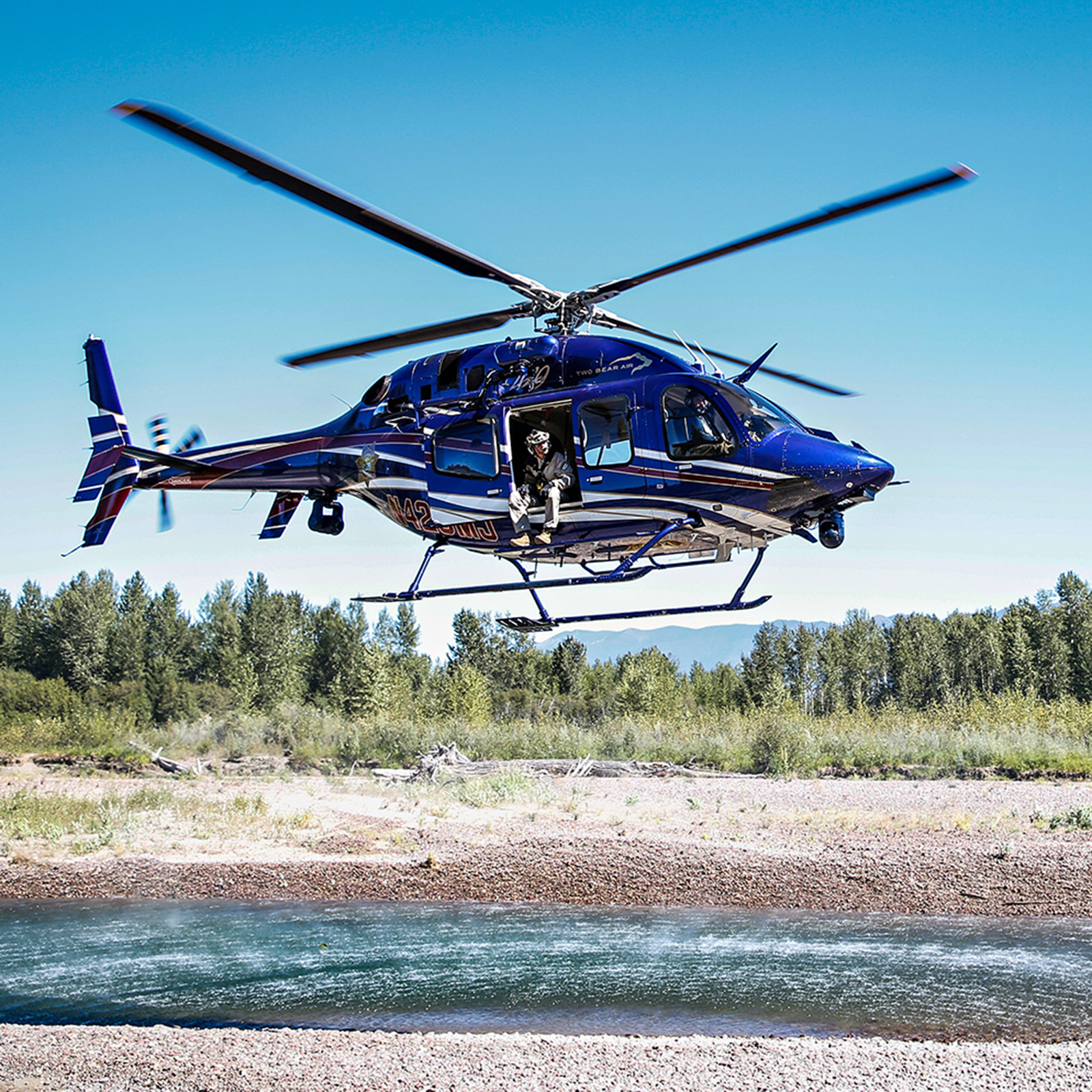
Two Bear Air first launched almost a decade ago after an experienced pilot named Jim Bob Pierce and a group of SAR technicians pitched the idea of a rescue helicopter to Whitefish philanthropist Mike Goguen.
At the time, Pierce, who owned Kalispell City Airport-based Red Eagle Aviation, was regularly donating his helicopter, fuel and time to assist on SAR missions and ferrying additional resources to ground crews — an informal mutual-aid agreement based on a handshake understanding.
“We thought we needed to make this formal,” Pierce said.
The air ambulance ALERT existed at the time, but flight crews could only assist in an emergency setting if the helicopter was physically able to land, an aerial feat that is not possible in many backcountry-rescue scenarios. Before Two Bear Air, pilots and medics with ALERT would sometimes land at the nearest geographic location possible before hiking deeper into the backcountry for miles to find patients.
When he heard the pitch, Goguen was surprised to learn there wasn’t already a rescue service available in the area and agreed to fund the SAR helicopter — but only if it was world-class and free of charge.
In 2014, the twin-engine Bell 429 helicopter became operational — equipped with a hoist, a camera, a tracking system, wireless intercom, and variety of cutting-edge SAR technology. While the aircraft is funded privately, it’s associated with the Flathead County Sheriff’s Office (FCSO), with its emblem displayed on the underside of the helicopter, visible to anyone standing beneath it.

In the first year, Pierce said a staff of three SAR techs responded to around 50 missions in the service area. The call volume doubled the following year, peaking at about 150 calls spanning the next couple of years. In 2018, the call volume dropped to about 100 after Flathead County dispatchers tightened their screening protocol more to make the best use of limited resources.
While Two Bear crews respond to missions regularly in the Flathead Valley, they also fly across the state and to remote areas in Idaho, which amounts to roughly half of their call volume, as well as in Washington and eastern Oregon to assist with SAR missions ranging from climbing accidents to missing hikers to river rescues.
Heckman said they frequently make the hour-and-a-half flight to the remote and mountainous area flanking McCall, Idaho, for rescues that include snowmobiling accidents and injured hikers.
But Two Bear has seen no region more than their backyard of Glacier National Park, which sees 3 million annual visitors who hail from all over the world. In a six-week period last year, Two Bear recovered the bodies of two local mountaineers who died in a climb on Dusty Star Mountain, an elderly Florida man who fell to his death on Rising Wolf Mountain, and a Columbia Falls teenager who died while ascending Mount Brown in spring conditions.
This May, Two Bear rescued a teenager from Michigan who spent three nights alone in the Apgar Mountains on the western edge of the park after slipping off the snow-covered Huckleberry Lookout Trail and sliding into the dense forest. The 19-year-old hiker, Matthew Read, lost his shoes in the process after becoming stuck in chest-deep snow. For nearly four days, he hunkered down in a tree shelter wearing shorts and no shoes, enduring periods of rain and low temperatures hovering around 40 degrees.
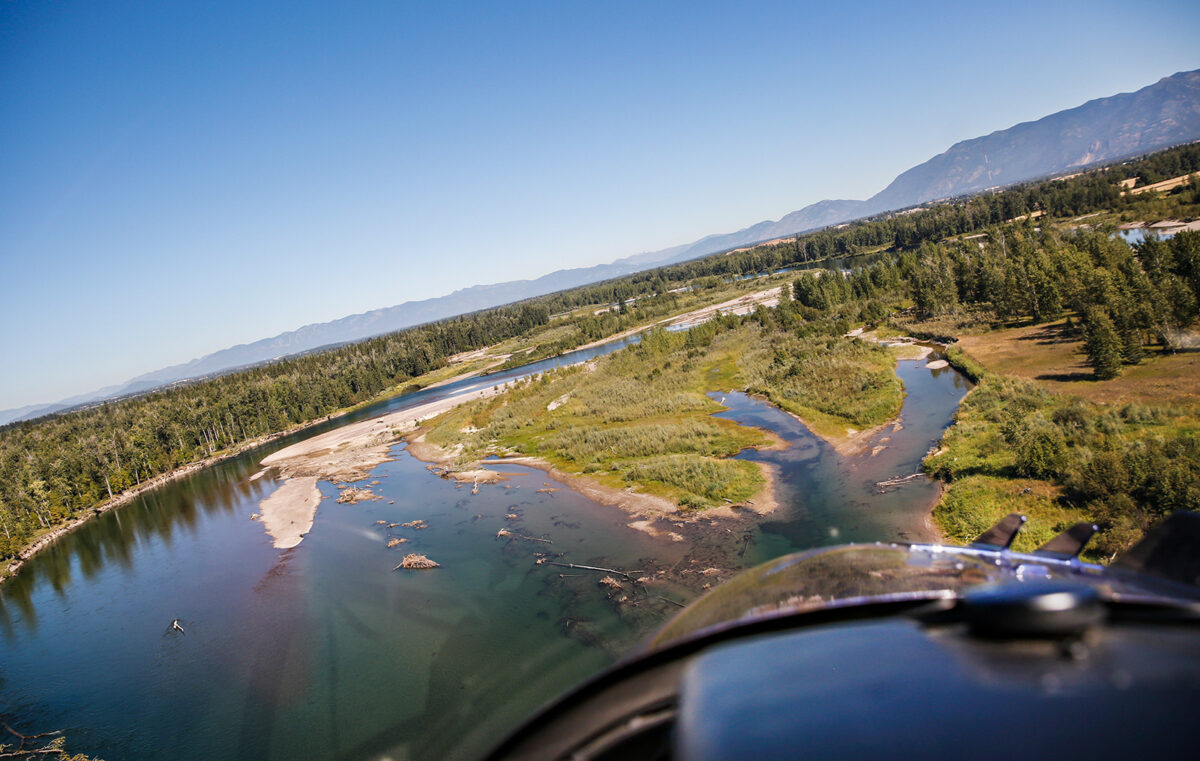
In their initial visual search, rescuers traced footprints leading from the trail to the drainage and pieced together Read’s path of travel before returning to the airport for more fuel and to activate the infrared camera, which functions better in the dark.
With the sun setting that evening, the Two Bear pilot flew a couple of passes up the drainage and the infrared camera detected Read almost instantly. A rescuer was lowered to the ground on a 175-foot hoist and Matthew yelled from his shelter to get his attention.
“When he came down, I was so relieved,” Read said. “I was starting to be unsure if they would actually find me and to have the helicopter drop the lights and have someone next to me. It’s about to be over — that was what was going through my head.”
While the infrared camera is often used to find missing hikers in the backcountry, it’s also used for locating people who are evading law enforcement. As long as deputies are equipped with night-vision goggles, Two Bear can illuminate the scene without the culprit’s knowledge and authorities can zero in on the subject.
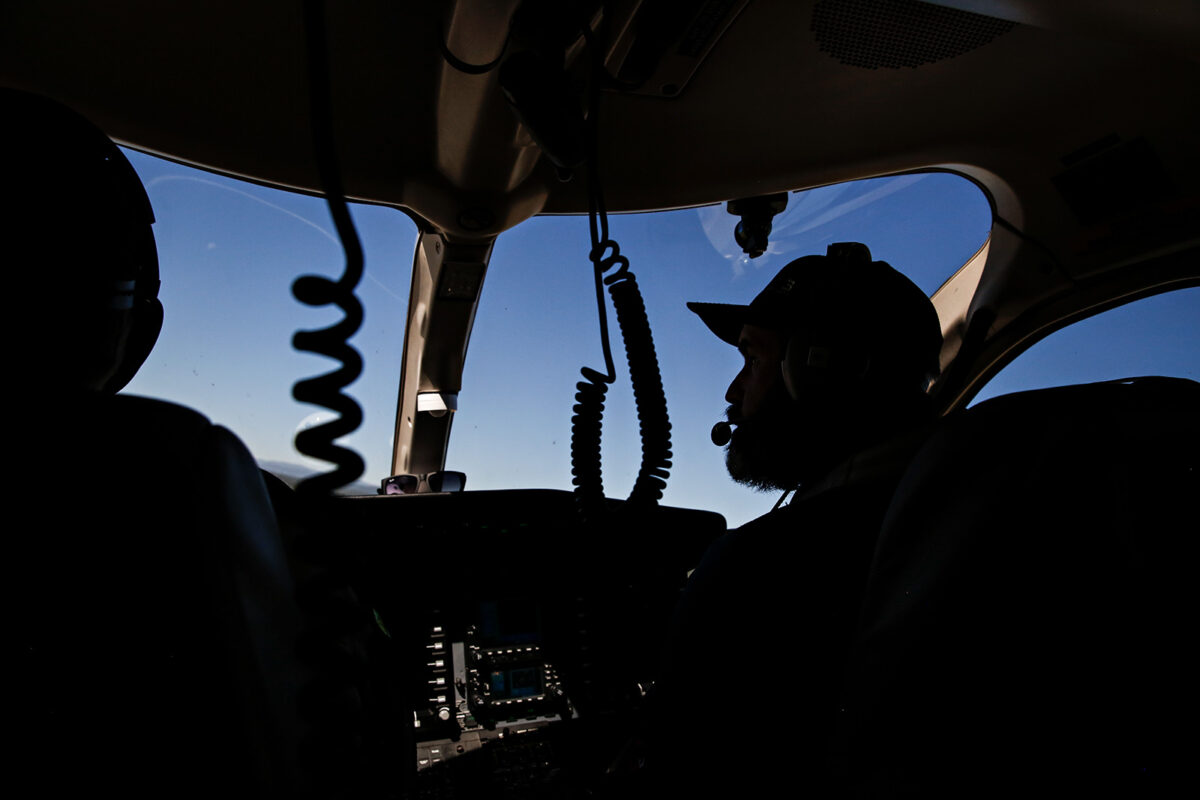
“Finding people that run into the woods is a lot easier for us than it is for the people on the ground,” Heckman said.
For example, in January, a duo stole a pickup truck in Kalispell and led Flathead County sheriff’s deputies on a pursuit through the Middle Fork Flathead River corridor heading east on U.S. Highway 2. After deputies failed to stop the vehicle — choosing to terminate the pursuit in West Glacier due to wintry weather conditions — Two Bear was dispatched to track the fugitives by air.
When the truck ran out of fuel in the Goat Lick area near Essex, the absconders abandoned the vehicle and ran into the forest. Flight officers found them 100 yards from the truck and directed authorities to their location. The suspects were arrested.
With the helicopter as a resource, Flathead County Sheriff Brian Heino said it’s not only faster and more accurate in locating subjects, but it prevents unnecessary risk for his deputies, who risk their lives — and put others’ in danger — during high-speed vehicle pursuits.
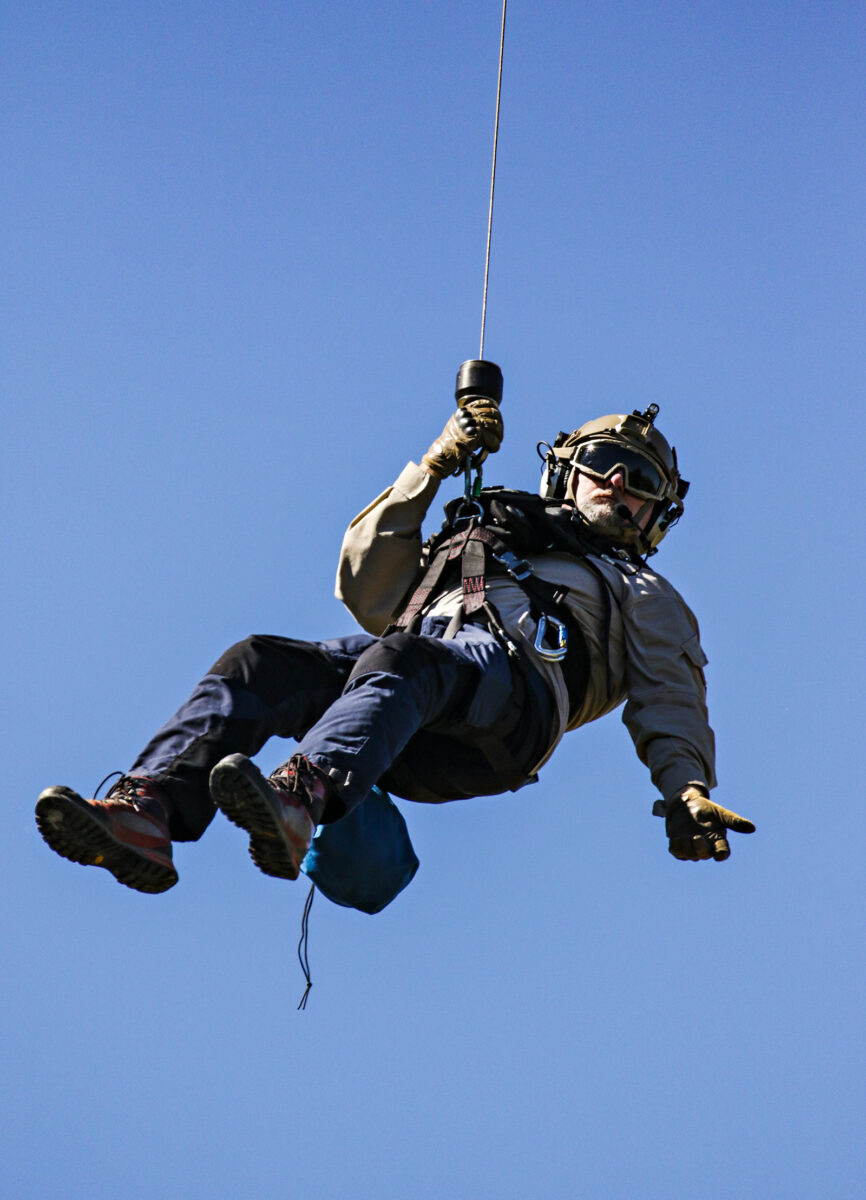
“Imagine yourself as an officer and maybe the person is armed and you don’t know where the person is,” Heino said. “It’s a safety tool … and response times are much faster of course. They are flying more than 100 miles per hour, and it just opens up the abilities to respond and be more diligent. It keeps officers safe, and the speed and response time is faster.”
As Flathead County continues to grow, Heino says the sheriff’s office call volume and demand for law enforcement has spiked in recent years, and Two Bear has been an essential resource.
According to 2020 U.S. Census Bureau data, Flathead County, which encompasses 5,280 square miles, grew its population by more than 15% since 2010, adding more than 13,000 residents. Between 2020 and 2021, the county saw a 5% increase in crime.
Historically, one FCSO deputy assists flight officers in the helicopter during missions, but Heino said they are phasing out of that protocol to divert resources elsewhere. Meanwhile, Two Bear recently hired two additional rescue specialists, bringing their staff to nine.
“It relieves some of the pressure off the sheriff’s office,” Heckman said. “They are so busy, and they can’t afford to lose a deputy.”
While deputies won’t spend as much time in the helicopter as they historically have, it helps that some of the crew members previously served in law enforcement roles, including rescue specialist and former Flathead County Sheriff Chuck Curry.
Serving with the FCSO for 34 years, eight of which as the sheriff, Curry was already trained with Two Bear, and he organically fell into the role after he retired from the sheriff’s office in 2018. Prior to law enforcement, Curry was a helicopter flight paramedic.
“I guess I wasn’t completely ready to retire,” Curry said. “It’s fun and rewarding and I really enjoy doing this.”
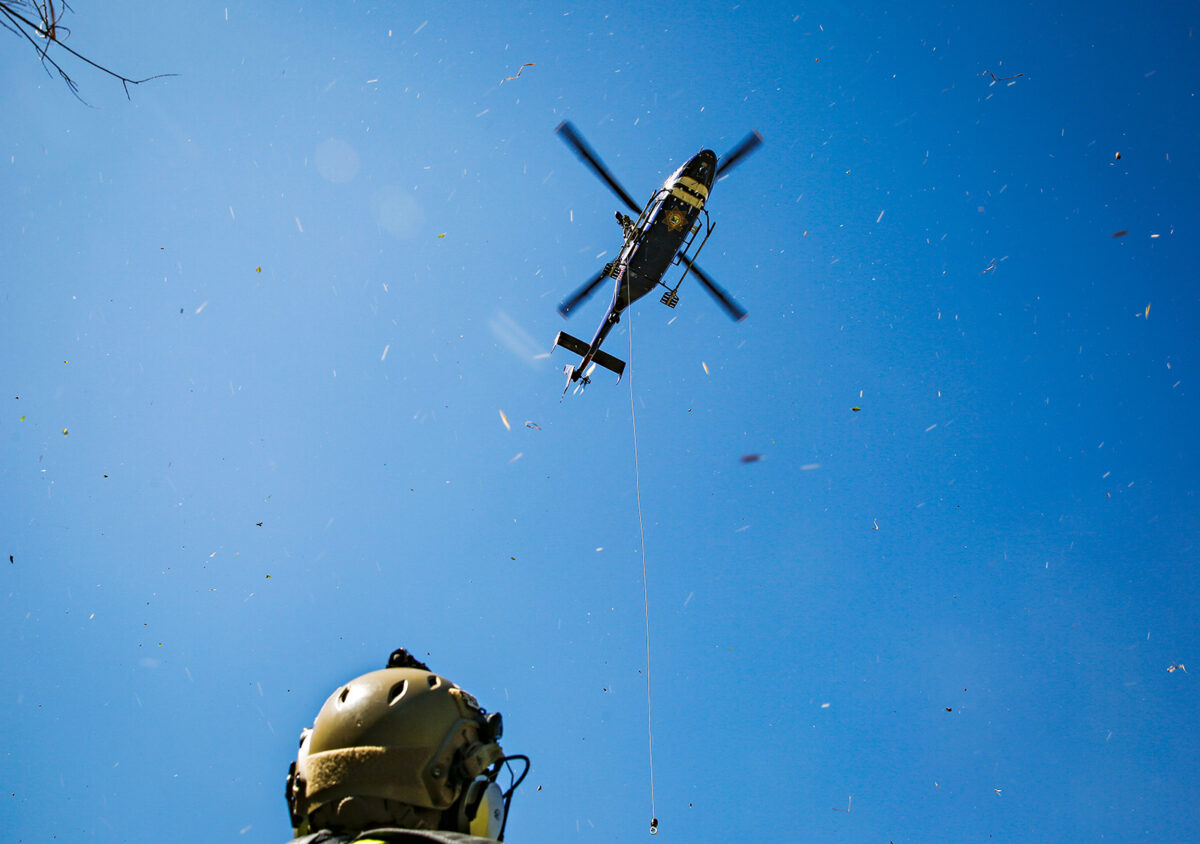
Since 2014, Two Bear has been dispatched to more than 1,000 missions, it’s added six more staff, and it continues to advance its technology with specialized equipment like the infrared cameras and RECCO SAR detectors. Last year, Two Bear retired its first Bell 429 helicopter and replaced it with the exact same model.
While the yearly missions peaked a few years ago, Curry and Heckman say the call volume remains high and they will continue to travel in the tri-state area to respond to calls across the region, especially in the summer months and in the winter for avalanche emergencies.
In the first three weeks of May this year, Two Bear responded to a missing hiker in Glacier, an injured hiker in Shoshone County, another missing hiker in Flathead County, and an injured man at Finger Lake.
“It fills a need,” Curry said. “And it saves people’s lives.”